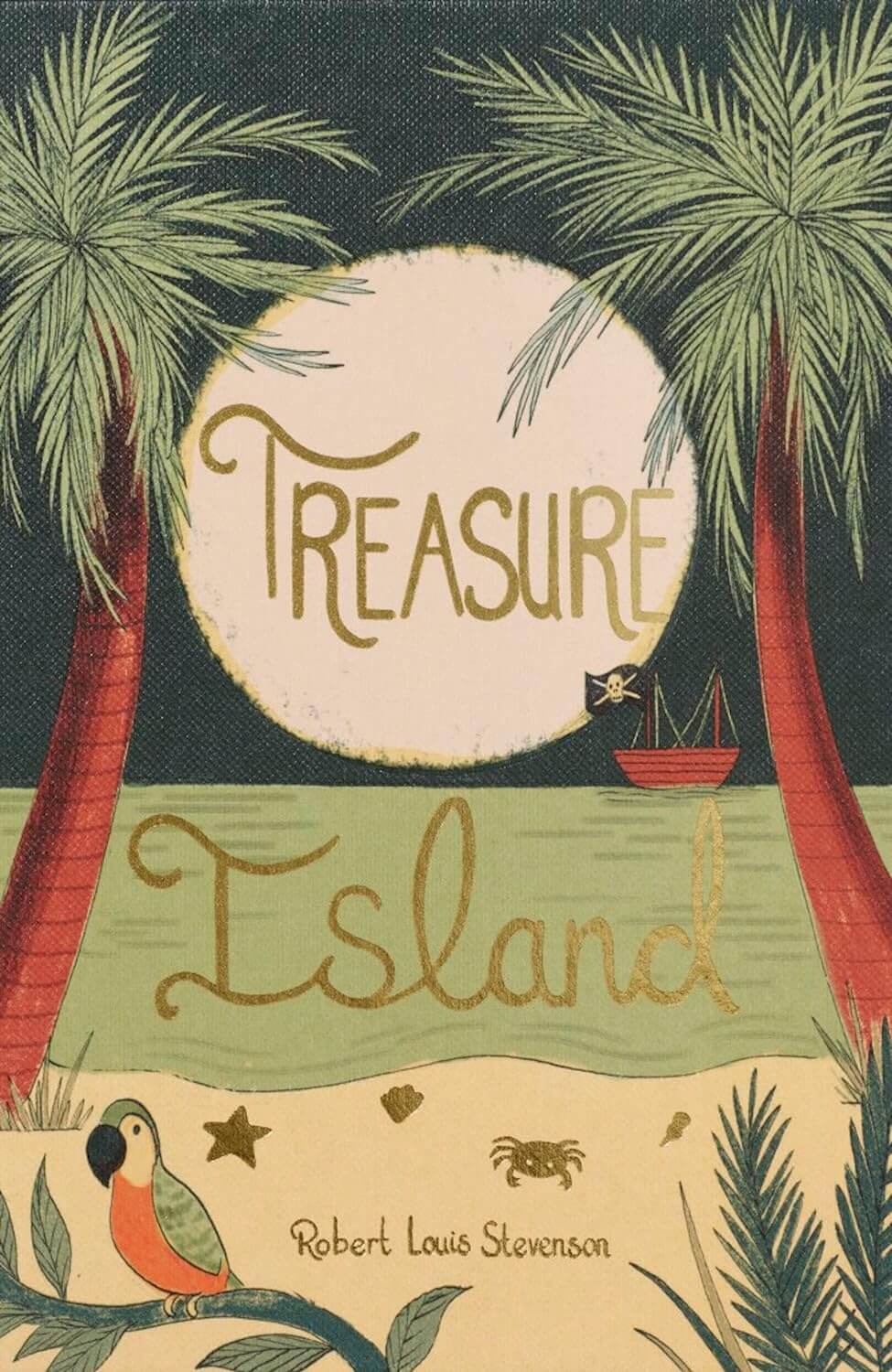Fans of the action literary genre love these books, in part because of the thrilling events that take place in each chapter. The only limit to these sensational classics is the author’s imagination and command of the written word. Exploding moons, nature turning against humanity, and superhuman secret agents are all possible in the realm of this exciting genre. Our list of the top seven best action books is chock-full of titles brimming with thrilling adventure.
Early genre action-adventure stories have their roots in fairy tales. The idea of protagonists seeking their fortune in unknown lands is at the heart of many classic fairy tales. These stories become the hero’s journey, following the main character through challenges and growth as seen in the best of classic literature like Homer’s “Odyssey,” which was published in English as early as 1614. The action-adventure genre started to focus on stories for young boys and includes works like “The Life and Adventures of Robinson Crusoe” (1719) by Daniel Defoe. As a stand-alone genre, action books would become more well-defined as some authors began to focus on sequences of combat, daring acrobatics, and larger-than-life events.
Fiction books — from “The Hunger Games” to “Harry Potter” — often don’t receive the same praise for their educational benefits as their non-fiction counterparts. However, a recent study finds picking something from the fiction section may also help improve your verbal skills while entertaining you at the same time. Studies show that regular reading has a connection to greater social skills, critical thinking, and empathy — in addition to increased language skills, vocabulary, and comprehension.
Action as a pure stand-alone genre can be difficult to define because so many of the critical elements of the action novel are also present in genres including fantasy, science fiction, and political espionage thrillers. We needed our sources to get to the bottom of which titles are the best action books of all time. Let us know your favorite action-packed classics in the comments below!

The List: Best Action Books, According to Readers
1. “Journey to the Center of the Earth” by Jules Verne (1864)
This classic book of adventure was originally written for young boys. It remains a well-loved classic today. PBC describes, “Action books are a genre of literature that focus on thrilling stories with exciting, fast-paced plots… [‘Journey to the Center of the Earth’ is] Jules Verne’s magnum opus and among the most well-known examples of [Hollow Earth] fiction.”

The Reading Lists says, “Jules Verne’s ‘Journey to the Center of the Earth’ is an action-packed adventure that will keep you on the edge of your seat from beginning to end. The story follows Professor Lidenbrock and his nephew Axel as they embark on a journey to the center of the earth, following a trail left by an Icelandic explorer.”
“The first adventure novel that you ever read is hard to forget: after all, we all remember the first time our imaginations were lit by whispers of buried treasure, lost worlds, and faraway jungles. … ‘Journey to the Center of the Earth’ is exactly that: a trip to the inside of the world, which is where German professor Otto Lidenbrock theorizes that volcanic tubes will lead,” says discovery.
2. “Jurassic Park” by Michael Crichton (1990)
“Jurassic Park” is a great action-filled title that rivals the classic Steven Spielberg film in terms of wildly imaginative storytelling. This seminal classic was the gateway to action and science fiction for many readers. Discovery praises, “Unless you’ve been living under a rock for the past two decades, you’ve probably heard of this story. In 1989, billionaire John Hammond contacts paleontologist Alan Grant and paleobotanist Ellie Sattler, inviting them to go on an adventure into the past — and the darkest parts of human ambition.”

“You didn’t really think that the movie was the original deal? Crichton was the first one to write about… the cloning and recreation of dinosaurs from the Jurassic period. But was that such a good idea, and when will people finally listen to Jeff Goldblum?” asks Vaia.
Shortform details, “An astonishing technique for recovering and cloning dinosaur DNA has been discovered. Now humankind’s most thrilling fantasies have come true. Creatures extinct for eons roam ‘Jurassic Park’ with their awesome presence and profound mystery, and all the world can visit them—for a price.”
3.“Dune” by Frank Herbert (1965)
“Dune” is an epic book with a grand scope. The action sequences include surprising gladiator style knife fights. Ranker explains, “Dune is a 1965 epic science fiction novel by Frank Herbert. It won the Hugo Award in 1966, and the inaugural Nebula Award for Best Novel… Herbert wrote five sequels: ‘Dune Messiah,’ ‘Children of Dune,’ ‘God Emperor of Dune,’ ‘Heretics of Dune,’ and ‘Chapterhouse: Dune.'”

Unwrapped offers, “‘Dune’ tells the tale of teenage Paul Atreides (the presumed successor to Duke Leto Atreides and claimant to House Atreides) when he and his father embrace sovereignty over the desert planet Arrakis, the first and only destination of the spice mélange, the most important and valuable material in the universe.”
Discovery states, “The first installment of the ‘Dune series,’ ‘Dune’ is an interstellar adventure that revolves around several different noble houses battling to control the desert [planet] Arrakis, upon which the coveted spice mélange resides.”
4. “Treasure Island” by Robert Louis Stevenson (1883)
This classic has been adapted numerous times. It is a thrilling tale of action on the high seas. PW claims, “All the clichés are here—the treasure map (X marks the spot), the one-legged pirate, the plucky cabin boy, the talking parrot—but they only feel like clichés to us now because Stevenson’s novel, so new and original at the time, has driven them so deep into our collective unconscious.”

Unwrapped relates, “‘Treasure Island’ is an adventure story by Scottish author Robert Louis Stevenson, recounting a tale of ‘buccaneers and lost gems.’ The impact is immense on the common representations of pirates, featuring items such as treasure maps labelled with an ‘X,’ schooners, the Black Spot, tropical islands, and one-legged seamen carrying parrots on their shoulders.”
The Reading Lists reviews, “‘Treasure Island’ is one of the most famous action-adventure stories ever written. Published in 1883, the book tells the story of Jim Hawkins, a young boy who finds himself caught up in a piratical treasure hunt.”
5. “King Solomon’s Mines” by H. Rider Haggard (1885)
This is a tale of the stranger in a strange land. It is an action-adventure archetype that defines the genre. “Launched in a time when Africa looked infinite and mostly unexplored, at least from a Western perspective, Haggard’s classic adventure book established a template… The ‘Indiana Jones’ movies owe a massive debt to Haggard,” according to PBC.

Discovery asserts, “The first English adventure novel set in Africa, this 1885 book is considered to be the origin of the Lost World literary genre. It boasts six adaptations, including a 1937 British film and a 2004 American television miniseries.”
Ranker evaluates, “King Solomon’s Mines is a popular novel by the Victorian adventure writer and fabulist Sir H. Rider Haggard. It tells of a search of an unexplored region of Africa by a group of adventurers led by Allan Quatermain for the missing brother of one of the party. It is the first English adventure novel set in Africa and is considered to be the genesis of the Lost World literary genre.”
6. “The Hunger Games” by Suzanne Collins (2008)
This book revitalized the young adult genre. It also spawned endless copies. According to Unwrapped, “The Capitol, a highly developed metropolis, has political power over most of the nation’s remainder. ‘The Hunger Games’ is an official event in which, of each of the twelve regions of the Capitol, one boy and one girl aged 12–18 are chosen by lottery to participate in a televised royal fight to the death.”

Shortform assures, “In the ruins of a place once known as North America lies the nation of Panem, a shining Capitol surrounded by twelve outlying districts. The Capitol is harsh and cruel and keeps the districts in line by forcing them all to send one boy and once girl between the ages of 12 and 18 to participate in the annual ‘Hunger Games,’ a fight to the death on live TV.”
Vaia articulates, “You know the story: Every year, two children from 12 districts of Panem are sent into an arena where they have to fight to the death. When Katniss Everdeen’s sister is picked, Katniss volunteers to take her place. Unbeknownst to her, she has just volunteered to lead the revolution!”
7. “Divergent” by Veronica Routh (2011)
Divergent is an often maligned series due to the massive failure of its film adaptation. The book is a well-reviewed and action-packed best seller. Gizmodo raves, “This is just one of the many, many dystopian young adult science fiction novels that have trundled down the assembly line in the years since ‘Hunger Games’ unleashed an insatiable hunger… Reviews of this book tend to mention its nonstop violence and Roth’s mastery of action scenes.”

Unwrapped praises, “The book Divergent depicts a post-apocalyptic interpretation of Chicago and portrays Beatrice’s ‘Tris’ Prior as she examines her role within a world that determines its people through its social and attitude association with five sects, removing the possibility of anyone expressing an individual will and undermining the survival of the community.”
“In Beatrice Prior’s dystopian Chicago world, society is divided into five factions, each dedicated to the cultivation of a particular virtue—Candor (the honest), Abnegation (the selfless), Dauntless (the brave), Amity (the peaceful), and Erudite (the intelligent). On an appointed day of every year, all sixteen-year-olds must select the faction to which they will devote the rest of their lives,” exclaims Shortform.
You might also be interested in:
Sources:
Note: This article was not paid for nor sponsored. StudyFinds is not connected to nor partnered with any of the brands mentioned and receives no compensation for its recommendations.
